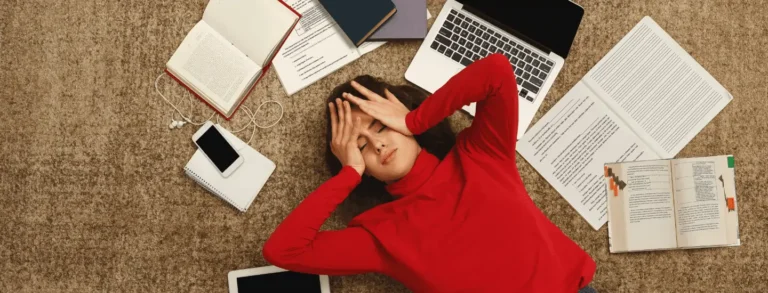Are you tired of spending a small fortune on commercial laundry detergents filled with synthetic chemicals and artificial fragrances? If so, it might be time to explore the world of homemade laundry detergent. Crafting your own detergent not only saves money but also allows you to take control over what goes into your wash. Imagine creating a blend that is tailored specifically to your family’s needs—gentle yet effective, eco-friendly, and free from harsh additives.
Making homemade laundry detergent has become increasingly popular among those seeking sustainable living solutions. As we dive into this ultimate guide, you’ll discover all the benefits of DIY detergents and learn how simple it can be to whip up your own batch right in your kitchen. No more mystery ingredients or excessive packaging—just pure cleaning power made by you! Let’s unravel the secrets behind choosing and crafting the perfect homemade laundry detergent for an environmentally conscious lifestyle.
Benefits of Making Your Own Detergent
Making your own detergent offers a range of appealing benefits. First and foremost, it’s cost-effective. By purchasing bulk ingredients, you can create multiple batches for a fraction of the price of commercial options.
Another advantage is control over ingredients. Many store-bought detergents contain harsh chemicals that can irritate sensitive skin. When you make your own, you decide what goes in—perfect for families with allergies or skin sensitivities.
Homemade laundry detergent also tends to be more eco-friendly. You can choose natural ingredients that are biodegradable and gentle on the environment, reducing your carbon footprint.
Customization is another perk. Whether you prefer a particular scent or need specific stain-fighting powers, DIY formulas allow endless possibilities tailored to your lifestyle.
Plus, crafting your own detergent can be a satisfying creative outlet—a fun project to involve family members while promoting sustainable habits!
Common Ingredients Used in Homemade Detergents
When crafting your own homemade laundry detergent, the right ingredients are key. Many recipes start with washing soda, a powerful cleaner that boosts stain removal and deodorizes fabrics.
Borax is another popular choice. This mineral compound not only enhances cleaning power but also softens water, making it easier for detergents to work effectively.
For those looking for a natural option, soap flakes made from pure soap can be an excellent base. They dissolve easily in water and provide gentle yet effective cleaning.
Essential oils add a personal touch. Scents like lavender or tea tree oil not only provide fragrance but also offer antibacterial properties.
Baking soda works wonders as a deodorizer and helps to brighten whites without harsh chemicals. These ingredients combine to create an efficient and eco-friendly alternative to store-bought options.
Types of Homemade Detergents (Liquid, Powder, Pods)
When it comes to homemade laundry detergent, you have several options. Each type serves its purpose and can be tailored to your preferences.
Liquid detergents are popular for their ease of use. They dissolve quickly in water, making them ideal for cold washes. You can customize the scent and adjust the thickness based on your needs.
Powdered detergents offer a longer shelf life and typically require fewer ingredients. They can be more effective at tackling tough stains but may need a bit of extra effort to fully dissolve in colder temperatures.
Pods are a convenient option gaining traction among DIY enthusiasts. These pre-measured capsules contain concentrated detergent that simplifies laundry day. While they may take some practice to create perfectly, they’re great for those who enjoy precision in their washing routine.
Step-by-Step Guide to Making Your Own Detergent
Making your own laundry detergent is simpler than you might think. Start by gathering all your ingredients and tools. You’ll need washing soda, borax, and a soap bar—castile or Fels-Naptha works well.
Begin by grating the soap bar using a cheese grater or food processor. This helps it dissolve more easily in water.
Next, combine one cup of grated soap with one cup of washing soda and one cup of borax in a large mixing bowl. Mix thoroughly until everything is evenly distributed.
For liquid detergent, heat four cups of water in a pot until just boiling. Add the mixture from the bowl to this hot water while stirring constantly.
Pour it into an airtight container once it cools down. For powdered detergent, simply transfer your blend into a storage jar for easy access when doing laundry!
Tips for Storing and Using Homemade Detergent
Storing homemade laundry detergent properly ensures its effectiveness and longevity. Use airtight containers to keep moisture and contaminants out. Glass jars or plastic bins work well, but always label them for easy identification.
When it comes to usage, start with a small amount—typically one to two tablespoons per load. This helps avoid residue buildup on clothes and in your machine.
If you make liquid detergent, shake the container before each use. Ingredients can settle over time, affecting cleaning power.
For powdered versions, consider using a scoop dedicated solely to your detergent to prevent cross-contamination from other substances in your laundry room.
Keep detergents away from heat sources or direct sunlight; both can degrade ingredients faster than you might expect. Storing in a cool, dry place is ideal for maintaining potency while ensuring safety around pets and children is crucial as well.
Cost Comparison with Store-Bought Detergents
When it comes to cost, homemade laundry detergent often shines compared to store-bought options. The ingredients for a basic recipe—like washing soda, borax, and soap—are relatively inexpensive and can last multiple batches.
A typical store-bought bottle of detergent might set you back anywhere from $10 to $20. In contrast, the same amount of homemade detergent could cost less than half that price. It adds up over time.
Additionally, many commercial detergents contain water as a filler. By making your own, you’re paying only for the active cleaning agents without unnecessary additives.
This financial advantage makes DIY detergents appealing not just for budget-conscious individuals but also those wanting more control over their cleaning products.
By choosing this route, you’re investing in both savings and satisfaction while effectively tackling laundry day challenges at home.
Eco-Friendly Options for Homemade Detergents
When it comes to homemade laundry detergent, eco-friendly options are both effective and gentle on the planet. You can start with organic ingredients like washing soda, borax, and natural soap bars made from coconut or olive oil. These alternatives break down easily in the environment.
Essential oils add fragrance without harmful chemicals. Scents like lavender or tea tree not only smell great but also offer antibacterial properties.
Consider adding baking soda for extra cleaning power and odor neutralization. It’s a versatile ingredient that enhances the effectiveness of your detergent while being safe for water systems.
Vinegar is another fantastic addition. It softens fabrics naturally and helps remove stubborn stains without harsh additives.
By choosing these sustainable materials, you contribute to a healthier ecosystem while keeping your clothes fresh and clean. Eco-friendly doesn’t mean compromising on quality; it’s about making smarter choices for our future.
Troubleshooting Common Issues with Homemade
Homemade laundry detergent can sometimes come with its own set of challenges. One common issue is residue left on clothes after washing. This often occurs if the detergent isn’t fully dissolved or if too much is used. Consider reducing the amount next time or ensuring you mix it well.
Another problem might be odors lingering in your laundry post-wash. If this happens, check your washing machine for mildew buildup and run a cleaning cycle regularly.
If clothes aren’t getting clean, it might be due to hard water interfering with the ingredients’ effectiveness. Adding a little vinegar during the rinse cycle can help combat this.
Color fading can occur when using natural ingredients that are less effective against certain stains. Experimenting with different recipes could yield better results while keeping colors vibrant and fresh.
The Benefits of Using Homemade Detergent
Using homemade laundry detergent offers a wealth of advantages. One significant benefit is cost savings. Creating your own detergent can be much cheaper than purchasing commercial brands, especially when buying ingredients in bulk.
Another key advantage is control over the ingredients you use. Many store-bought detergents contain harsh chemicals and artificial fragrances that can irritate sensitive skin. By making your own, you choose natural and gentle components to protect both your family and the environment.
Homemade detergents are also customizable. You can adjust scent strength or even add essential oils for added freshness as per personal preference.
Additionally, many people appreciate the eco-friendly aspect of DIY detergents. With minimal packaging waste and fewer harmful chemicals leaching into water systems, this option contributes positively to environmental sustainability while effectively cleaning your clothes.
Ingredients Needed for Homemade Detergent
When it comes to crafting your own homemade laundry detergent, the choice of ingredients plays a crucial role. The most common base components include washing soda, borax, and soap flakes. These elements provide effective cleaning power while avoiding harsh chemicals.
You might also consider adding essential oils for fragrance. Lavender or lemon oil can give your laundry a fresh scent without synthetic fragrances that often irritate sensitive skin.
Baking soda is another fantastic ingredient. It not only boosts cleaning efficiency but also helps with deodorizing fabrics. For those looking to enhance stain removal, consider incorporating white vinegar during the rinse cycle.
Don’t forget about natural soap! Fels-Naptha or Castile soap are excellent choices that dissolve well in water and effectively lift dirt away from clothes. With these ingredients on hand, you’re well on your way to creating an eco-friendly solution tailored to your needs.
Safety Precautions to Keep in Mind
When crafting your homemade laundry detergent, safety should always be a priority. Start by wearing gloves to protect your skin from any irritation caused by the ingredients. Some components can be harsh, so handling them with care is essential.
Ensure you work in a well-ventilated area. Mixing powdered or liquid ingredients can release dust and fumes that might irritate your eyes or respiratory system.
Keep all materials out of reach of children and pets. Homemade detergents may look harmless but could pose risks if ingested.
It’s also wise to label your containers clearly. If someone else uses your supplies, they’ll know exactly what’s inside without confusion.
Perform a patch test on fabrics before using new detergent recipes widely. This helps avoid damage or discoloration on sensitive materials while ensuring compatibility with different textiles.
Conclusion
Making your own homemade laundry detergent is not just a practical decision; it’s also a way to take control of what you use in your home. With the rising awareness of harsh chemicals and their impact on health and the environment, creating a DIY detergent allows for customization that meets your specific needs.
The benefits are numerous—from saving money to reducing waste. You can enjoy peace of mind knowing exactly what goes into each batch while contributing positively to environmental sustainability. Whether you prefer liquid, powder, or pods, there’s an option that suits everyone.
Getting started might seem daunting at first, but with simple ingredients and straightforward recipes, you’ll find it’s easier than anticipated. Keep safety precautions in mind as you mix these ingredients to ensure a safe process for yourself and your family.
As you experiment with different formulas and storage methods, remember that troubleshooting common issues will help refine your approach over time. The journey toward making homemade laundry detergent could lead to surprising discoveries about effectiveness compared to store-bought alternatives.
Embracing this practice may open doors to healthier living habits while encouraging creativity in household tasks—it’s more than just doing laundry; it’s about crafting something uniquely yours!








